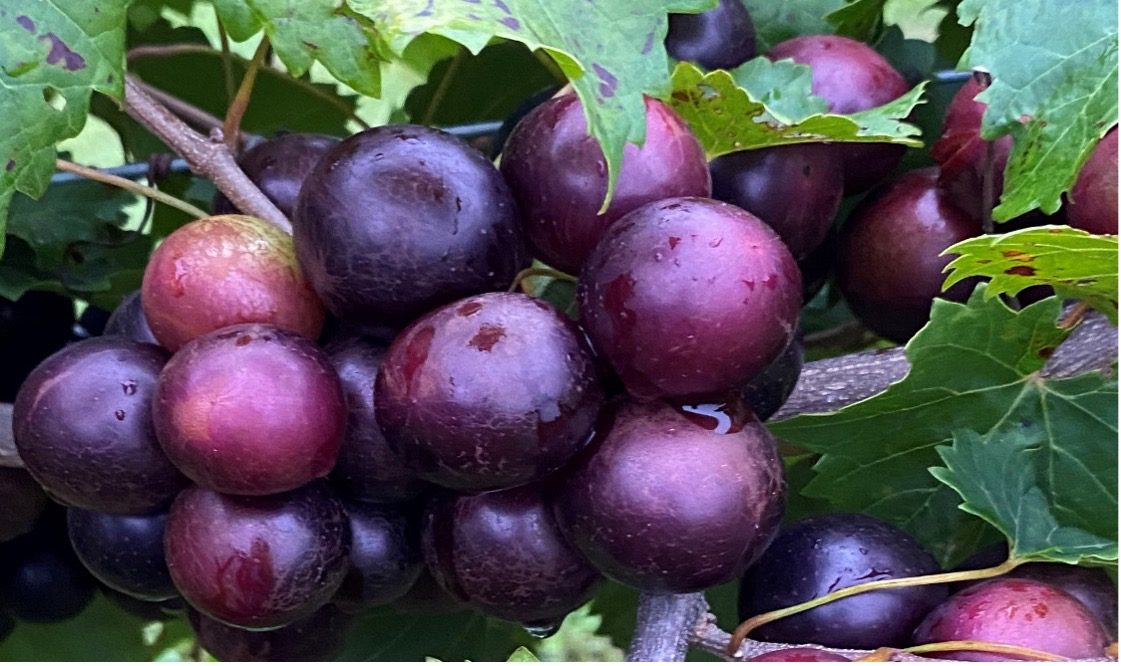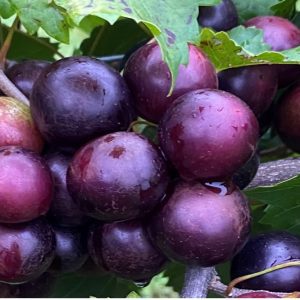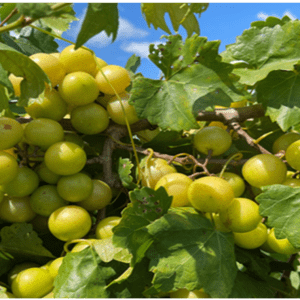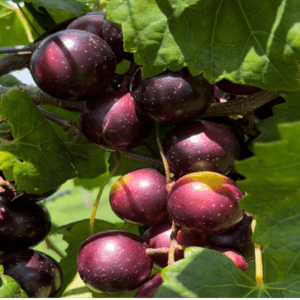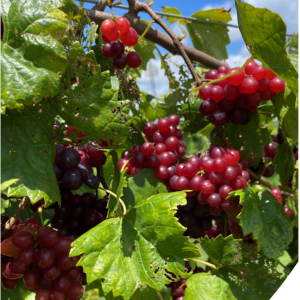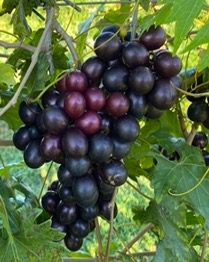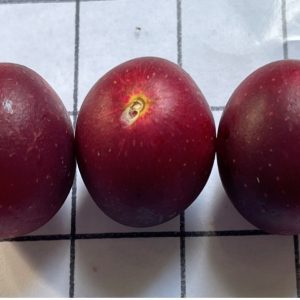Crop Production

Muscadine grapes are a very popular local fruit with distinctive aromas and flavors. Fresh muscadines grapes are five to ten times higher in antioxidants than the usual table grapes and two to three times higher than a blueberry fruit. Muscadine grapes have lower pesticide needs than most other fruit crops due to their inherent resistance or tolerance to some of the major grapevine diseases and pests native to the Southeast.
Most of the currently cultivated muscadine varieties have pistillate (female, bearing only pistils) flowers, while others, have perfect (with both male and female structures, also known as self-fertile) flowers. The perfect-flowered muscadine cultivars are used primarily as pollenizers f
or the pistillate cultivars, but they are more susceptible to diseases and pests than the pistillate cultivars. Current fresh-market muscadine grape breeding programs have released new cultivars with larger and more uniform berries, thinner skins, crisp flesh, and non-slip skins that adhere to the flesh. These advances provide an opportunity for growth of the muscadine grape industry through utilization and market introduction of new, high quality cultivars.
- Figure 1. ‘Supreme’ muscadine grape grown at the CREC. 2022.
- Figure 2. Experimental vineyard established at the CREC, Clanton, Alabama in 2019.
- Figure 3. Yield and fruit quality of maturing ‘Hall’ muscadine grape at the CREC. 2022.
- Figure 4. Yield and fruit quality of maturing ‘Lane’ muscadine grape at the CREC. 2022.
Objectives
Recently released self-fertile and large-fruited ‘Hall,’ ‘Lane,’ ‘Paulk,’ ‘Southern Home,’ ‘Razzmatazz,’ and ‘Supreme’ (used as a control) muscadine grape cultivars were planted at the Chilton Research and Extension Center in 2019 (Figure 1 and 2) to evaluate their overall performance in Alabama’s environment to gain information on their productivity, fruit quality, disease resistance, and longevity.
Results
‘Hall’ is one of the earliest ripening varieties with sweet taste and attractive skin color that consumers in the Southeast prefer. During 2022, berries started to mature in the beginning of August (Figure 3). The average total yield/vine was 61 lb./vine and was the highest among all cultivars tested. The mean berry weight was 11.4 g, and total soluble solids (TSS) were 16.5%.
‘Lane’ is also an early ripening, large-fruited self-fertile cultivar with black berries and moderate vine vigor. The total yield/vine was 33.5 lb. (Figure 4) with average berry weight of 11.1 g. First harvest started on August 18 in Central Alabama. Berries were sweet (16.5% sugars) and aromatic.
‘Razzmatazz’ is a muscadine and Vitis vinifera (French) grape hybrid with perfect flowers and seedless berries that ripen on small clusters (Figure 5). ‘Razzmatazz’ grape is a highly disease-resistant cultivar that is continuously fruiting along the shoot. Berries are very sweet and had the highest sugars of 17.3%, tasty with a crisp texture. Clusters matured uniformly in mid-August with small (1.1 g) berries. Total yield/vine was 5.6 lb. Typically ‘Razzmatazz’ is recommended for home gardens and also can be grown on patios.
‘Southern Home’ is a hybrid between muscadine and bunch grape species that has a small to medium berry size, crisp flesh texture, good flavor and overall fruit quality. Harvest of berries started on August 25, 2022 and the average berry size was 7.6 g. ‘Southern Home’ vines yielded 36.4 lb./vine with TSS of 16.0%. The characteristic cut leaf pattern (Figure 6) creates an ornamental appeal. ‘Southern Home’ is recommended for home gardens.
‘Paulk’ is a mid-season, large-fruited, perfect-flowered muscadine grape cultivar with dry stem scar berries that are easy to pick due to the long pedicel attaching the berry to the cluster. Berries started to mature and were harvested on September 16, 2022. The total yield per vine was 29.5 lb. and the average berry size of 16 g (Figure 7) was the largest among all cultivars tested.
- Figure 5. Yield and fruit quality of maturing ‘Razzmatazz’ muscadine grape at the CREC. 2022.
- Figure 6. Yield and fruit quality of maturing ‘Southern Home’ muscadine grape at the CREC. 2022.
- Figure 7. Fruit quality of maturing ‘Paulk’ muscadine grape at the CREC. 2022. Each grid line is measuring one inch.

